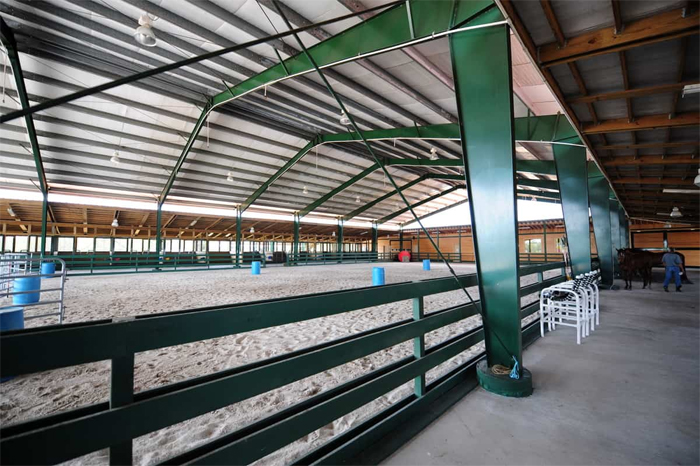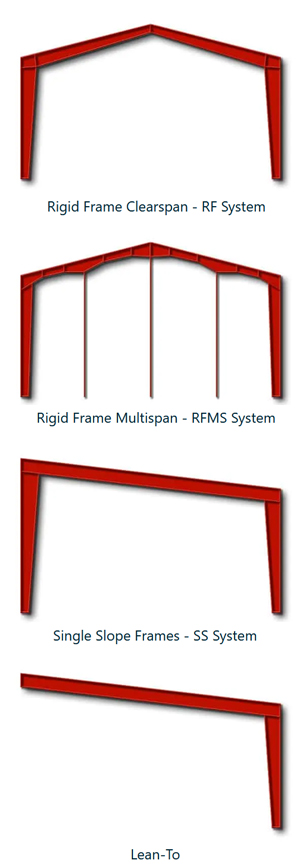What Factors Go Into Determining The Best Framing Style For Your Building?

Submitted by MBMI Metal Buildings
Selecting the appropriate framing style is one of the foundational steps in designing a durable and functional metal building. The choice of framing directly
affects a structure’s integrity, usability, and overall cost-efficiency. Key factors influencing the selection of the best framing style include building size, intended purpose, budget, and local environmental conditions. Understanding these
variables enables future building owners to make informed decisions tailored to their specific needs. At MBMI Metal Buildings, we are
committed to providing expert guidance throughout this decision-making process, ensuring that our customers select the ideal framing style for their unique projects.
 Building Size & Load Requirements
Building Size & Load Requirements
The size of your building and its load requirements are critical considerations that influence the choice of framing style.
• Clear Span vs. Multi-Span: For larger buildings, multi-span framing is often essential to provide the necessary support and stability. It involves multiple support beams and columns that distribute the load across the structure. In
contrast, clear-span framing maximizes open interior space with minimal obstructions, allowing for versatile floor plans without internal columns.
• Roof Loads & Snow Loads: Geographic location plays an instrumental role in determining roof framing choices. Areas that experience heavy snowfall or rain necessitate stronger load-bearing capacities to ensure that the roof remains
intact and functional. Understanding local weather conditions ensures that the framing can withstand environmental stresses effectively.
• Wind & Seismic Considerations: Buildings located in coastal regions or seismic zones are subject to unique structural challenges.
These areas may require reinforced framing systems to endure environmental forces such as hurricane winds or ground movement during an earthquake. Properly chosen framing styles enhance the resilience of the structure.
Intended Use & Interior Space Needs
The intended use of your building greatly influences your choice of framing style, as different applications have distinct interior space requirements.
• Commercial Steel Building: Industrial buildings often need high load-bearing capacity coupled with open layouts for efficient operations,
making rigid frame construction ideal for these applications. The absence of interior columns allows for the installation of heavy machinery and storage setups without obstruction.
• Agricultural & Equestrian Buildings:
Structures designed for agricultural purposes, such as barns or stables, typically benefit from gable or single-slope frames. These styles provide sufficient overhead space for equipment and livestock while accommodating practical roof profiles.
• Retail & Office Spaces: The design flexibility needed in retail or office environments often requires aesthetic considerations along with potential mezzanine spaces for added floor levels. Framing selection should reflect the architectural
vision, allowing for adaptable layouts and pleasing facades.
Budget & Cost Considerations
Cost plays a pivotal role in determining the most appropriate framing style for your building project.
• Material Costs: Various framing styles impact material efficiency and overall cost. For example, rigid frames are typically more expensive due to their robustness and durability, but they offer long-term value by minimizing maintenance
needs.
• Labor & Construction Efficiency: Some styles, such as gable frames, are easier and quicker to install, which can lead to reduced construction costs. Lowering labor time not only cuts expenses but also accelerates project timelines.
• Future Expansion Needs: If future expansion is a consideration, opting for modular framing can be advantageous. Modular designs allow for easy modifications or additions, giving owners the flexibility to scale without extensive remodeling.
Local Climate & Environmental Factors
The local climate and other environmental conditions are paramount in determining the best framing style.
• High-Wind Areas: Regions susceptible to high winds necessitate wind-resistant framing solutions. Reinforced rigid frame designs can improve the safety and longevity of your structure, ensuring it withstands intense weather conditions.
• Seismic Zones: For structures in seismic zones, framing must include flexible, high-strength connections designed to absorb and dissipate movements, mitigating the impact of potential ground shaking.
• Hot & Cold Climates: Temperature extremes can affect insulation options and energy efficiency. The right framing style may play a critical role in enhancing a building's thermal performance, impacting heating and cooling costs long-term.
Aesthetic Preferences & Design Flexibility
The visual appeal of your metal building is another important factor that impacts framing choices.
• Choosing a Frame That Matches Your Vision: Some framing styles provide greater architectural flexibility, allowing designers to optimize the placement of doors, windows, and decorative facades that fit the overarching vision.
• Interior Layout & Column Placement: Clear-span designs are optimal for maximizing open floor space, enabling a free-flowing environment. Conversely, multi-span frames can lower overall costs but may introduce interior columns that
limit design and spatial freedom.
• Roof Styles & Customization Options: Options such as single-slope, gable, and curved frames can enhance the aesthetic quality and functionality of the building. Selecting the appropriate roof style aligns with architectural goals
and enhances weather resistance.
Conclusion: You Don’t Need to Be an Expert—MBMI Can Help
Determining the best framing style for your metal building involves considering numerous factors, but you do not have to navigate this complex landscape alone.
At MBMI Metal Buildings, our team of experts is dedicated to guiding customers through the process of selecting the right frame tailored to their specific needs. We prioritize
your satisfaction and long-term value, ensuring you receive a structure that aligns with your vision and functional requirements.
Contact us today for a consultation, and allow MBMI to assist you in designing the perfect metal building from start to finish.
About MBMI Metal Buildings
 MBMI Metal Buildings supplies pre-engineered metal buildings and accessories for a broad cross-section of markets, from ag buildings to commercial/industrial structures. For more information, visit www.mbmisteelbuildings.com.
MBMI Metal Buildings supplies pre-engineered metal buildings and accessories for a broad cross-section of markets, from ag buildings to commercial/industrial structures. For more information, visit www.mbmisteelbuildings.com.